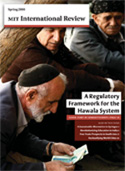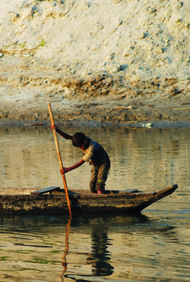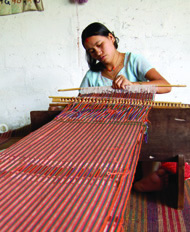-
After the Second World War, significant protectionist sentiment compelled the economies of South Asia to pursue import-substituting industrialization (ISI).
-
While intra-regional trade is not a novel concept for the region, the economies of South Asia are new to the ideas of regionalism and regionalization.
-
Several factors combine to make a negative case for a viable free trade agreement in the short-term. Even so, a reasonable case exists for the creation and gradual strengthening of SAFTA, as there are few benefits to dwelling on historical ill will. As these economies grow and economic complementarities begin to develop, the countries of South Asia may find that SAFTA can offer a potentially significant contribution to their progress.
Despite strong incentives to create a framework for economic integration, the countries of South Asia have faced an arduous path. The first concrete proposal to establish a model for regional cooperation emerged in May 1980 with the encouragement of Bangladesh’s former President, Ziaur Rahman. His idea was realized five years later through the establishment of the South Asian Association for Regional Cooperation (SAARC).
Due to a legacy of conflict between them, the member countries of SAARC were initially hesitant to come together. A lack of enthusiasm, a poor understanding of the benefits to regional integration, and excessive caution, made the processes of negotiation and implementation lengthy and challenging. Instead of devising pragmatic sub-regional integration schemes for the good of all members, SAARC often seemed to be nothing more than a host to discussions, seminars, and conferences. Notwithstanding its potential to accelerate growth, intra-regional trade, and investment, and alleviate poverty, it has fallen short of its stated objectives (Table 1).
Table 1. Gross National Income (GNI) in 2004
| Country | GNI (in Billions of Dollars) |
GNI Per Capita (in Dollars) |
| Bangladesh | 61.3 | 440 |
| Bhutan | 0.7 | 760 |
| India | 673.2 | 620 |
| Pakistan | 90.7 | 600 |
| Nepal | 6.6 | 250 |
| The Maldives | N/A | 2,300 |
| Sri Lanka | 19.5 | 1,010 |
Source: The World Bank. 2006. World Development Indicators. Washington, D.C. Table 1.1.
Liberalizing Protectionist Regimes
After the Second World War, significant protectionist sentiment compelled the economies of South Asia to pursue import-substituting industrialization (ISI). They maintained a strong anti-export bias, a massive public sector, and a control-ridden private sector at their periphery. ISI advocates worked to limit trade, especially intra-regional trade.
Pre-1990 tariff levels in Bangladesh, India, and Pakistan are demonstrative. In the early 1990s, a few South Asian economies began to slash tariffs and liberalize their domestic trade regimes. According to the United Nations’ Commodity Trade Database, while considerable tariff liberalization did occur, the region has continued to rank among the most highly protected in the world, second only to the group of socialist economies (Table 2).
Table 2. Tariff Rates in South Asian Economies (Percent)
| Country | Year | Simple Average | Weighted Average | Standard Deviation |
| Bangladesh | 2004 | 18.42 | 16.87 | 10.2 |
| Bhutan | 2002 | 16.61 | 18.18 | 10.9 |
| India | 2001 | 32.32 | 26.50 | 13.0 |
| The Maldives | 2003 | 20.21 | 20.68 | 13.2 |
| Nepal | 2003 | 13.61 | 16.80 | 10.9 |
| Pakistan | 2003 | 17.10 | 14.46 | 10.9 |
| Sri Lanka | 2001 | 9.25 | 6.68 | 9.3 |
Source: Mukherji. 2005. Computed from the United Nations' COMTRADE Database.
Both simple and trade-weighted average tariff rates1 were highest in India and lowest in Sri Lanka. In 1989-90, applied average unweighted tariffs for the South Asian economies were 76%. Non-tariff barriers (NTBs) and para-tariff barriers (PTBs) have also presented serious problems to sub-regional integration. In April 2006, trade ministers of the seven countries met in Dhaka to review and control NTBs and PTBs. Pursuant to that end, the SAFTA Committee of Experts was established to meet twice a year.
The South Asian economies implemented macroeconomic reforms and liberalization measures due to general disenchantment with the socialistic style of economic management that prevailed under the ISI regime, whereby large governments intervened in the economic sphere. Regional economic policymakers believe that their countries have been missing out on the growth opportunities that East and Southeast Asia enjoy. Except for Sri Lanka, the economies of South Asia failed to liberalize their trade and foreign investment policies until the early 1990s. A pioneer in the region, it undertook significant reform and liberalization measures towards the end of the 1970s and during the 1980s. Given the country’s relatively high per capita GNI, its reforms seem to have yielded significant benefits (Table 1).
In conjunction with trade policy liberalization, the South Asian economies also launched a much-needed and long-awaited campaign of industrial deregulation. Public policy mandarins were slow to realize the error of their ways. The business community and a segment of the policymaking community eventually began to recognize, however belatedly, how critical the external sector could be to economic growth and poverty alleviation. Even incomplete reform measures of recent times have achieved clear gains. At 16.1% in 1981, the poverty gap index for the region declined to 11% in 1990 and 6.4% in 20012.
Financial Sector Liberalization
Until the region could adopt a greater degree of integration, financial sector liberalization was necessary. India and Sri Lanka began to deregulate interest rates and permitted private sector banking to grow in the mid-1990s; Nepal and Pakistan pursued identical measures in the late 1990s. With the exception of India and Sri Lanka, who were concerned with looming budget deficits, a majority of South Asian economies followed suit.
Launched after a long period of procrastination, economic and structural reforms in these economies have been incomplete. There is a pressing need to implement further reforms, unleash market forces, reduce the high level of government intervention, and address the rigidities of current regional economic structures. As exemplified by the trade-induced path to growth that East Asia pursued, these measures promise to benefit the absolute poor3.
Consequences of Reforms and Restructuring
A review of the region’s economic history suggests that openness correlates significantly with accelerated economic growth. This relationship holds whether “openness” is measured in terms of trade policy (for example, the level of tariff and non-tariff barriers) or policy outcomes (for example, the ratio of trade (exports plus imports) to GDP). As seen in increasing levels of globalization during the 1990s, export-led growth provided a key strategic thrust to the South Asian region (consider, for instance, its significantly increasing ratio of merchandise trade to GDP).
In generating higher and more stable growth rates gradually, such measures brought about an impressive reduction in poverty. Three countries in particular—Nepal, India and Bangladesh—witnessed dramatic rates of reduction (11%, 10%, and 9%, respectively). Despite a backdrop of rapid economic expansion and significant welfare growth in the 1980s, Pakistan experienced an 8% point increase in poverty in the next decade.
These traditionally slow-growing economies also began turning in superior economic performances. From 2000 to 2005, Bangladesh, Bhutan, India, the Maldives, and Pakistan recorded average GDP growth rates of 5% or greater. Sri Lanka and Nepal fell behind, however, with respective growth rates of 4.7% and 2.5%. According to the World Bank’s 2006 World Development Indicators Report, GDP growth rates for all of the South Asian economies had passed 5% by 2005. India and Pakistan turned in stellar performances with respective annual GDP growth rates of 8.5% and 7.8%.
More than Incomplete Reform Programs
Reform implementation has remained slow and incomplete in the region. According to South Asia scholars, governance issues have proven to be its Achilles’ heel. Transparency International’s Corruption Perception Index (CPI), an annual ranking, found that Bangladesh was the most corrupt nation in the world, receiving a score of 1.7 out of 10. Other ranked South Asian countries also recorded poor performances (Table 3).
Table 3. Country Rank in the World CPI Score
| Country | Rank | Score |
| Bangladesh | 158 | 1.7 |
| Pakistan | 144 | 2.1 |
| Nepal | 117 | 2.5 |
| India | 88 | 2.9 |
| Sri Lanka | 78 | 3.2 |
Source: Transparency International. Berlin, Germany.
The economies of South Asia have continued to suffer from macroeconomic, financial, and governance-related constraints. These deficiencies have combined to retard productivity growth rates and rein in the competitiveness of export-oriented sectors. In effect, private economic activity has suffered from infrastructural bottlenecks, poor economic governance, labor and land constraints, and deficient financial market performance. The most conspicuous economic constraints have been attributable to power shortages, archaic labor laws, and inefficient customs procedures and trade regulations. Small and medium-sized business enterprises have frequently faced problems in accessing capital from the organized financial sector. While property rights have been properly defined, implementation has been arbitrary. Bureaucracy and rent-seeking practices in government continue to increase transaction costs enormously.
Longstanding social challenges have only exacerbated these economic difficulties—the presence of corruption, inefficient government systems, incompetent bureaucracies in the larger South Asian economies, domestic turmoil, and foreign conflict have all proved detrimental.
Though incomplete, recent reforms in this arena have demonstrated promise in facilitating the path towards integration. An increasingly democratic environment has contributed to institutional development and free press in the region. While bureaucratic hurdles have slowed progress on the one hand, associated governance improvements have accelerated it. Importantly, these reforms have helped to erode the most egregious forms of anti-export bias from which these economies suffered in the past.
Gradual domestic policy reforms improved export performance from 1990 to 2000, as reflected in improvements in trade to GDP ratios. According to two World Bank economists who study the South Asia region, financial flows helped South Asian economies surpass trend growth rates. After 9/11, Pakistan’s external debt burden declined sharply. A significant source of capital flow originated from remittances—more nationals from the larger South Asian countries live and work abroad as they repatriate their savings. In 2005, a total of $22 billion in remittances helped to stabilize the region’s balance of payments.
Intra-Trade and Regional Integration Initiatives
While intra-regional trade is not a novel concept for the region, the economies of South Asia are new to the ideas of regionalism and regionalization. Even before tariff barriers and NTBs had yet to be raised, trade barriers in the industrial economies were still significant at the time given the legacy of the Great Depression. As a result, intra-regional trade in South Asia declined. As many of the countries gained independence in the late 1940s, intra-regional trade came to account for almost one-fifth of total trade. However, these levels would soon see steady reductions—to 4% of total trade in 1960 and 2% in 1970. This figure more or less persisted until 1990, rising to only 4% by 1999.
Since the Uruguay Round (1986-94) and the Doha Round (2001-2006) of multilateral trade negotiations, India, Bangladesh, and Pakistan have begun to pursue strengthened economic ties with some enthusiasm. During the Doha Round of negotiations at the World Trade Organization, India was one of the leaders in the G20 economies, helping to define the rules of the multilateral trade regime on behalf of medium-sized and large developing countries. Bangladesh also played an effective role on behalf of the large developing countries in the Doha Round. While regional trade and integration endeavors in South Asia remained weak during the Uruguay Round, they accelerated markedly during the Doha Round.
Even so, this group of economies was still among the most highly protected groups in 2005. South Asia failed to open its domestic economies to global competition or attract greater levels of foreign direct investment (FDI). The Maldives was an exception in this regard and was able to attract a notable amount of FDI to its tourism sector. While FDI inflows to the sub-region have improved since 2000, South Asian economies have, on the whole, remained unattractive to the global investment community. Furthermore, regionalism and regionalization in this group of economies have failed to make much headway. Intra-regional trade currently accounts for a mere 5% of total merchandise trade. As a share of GDP, relative intra-regional trade levels in South Asia are among the lowest in the world (Table 4).
Table 4. Intra-Regional Trade as a Percent of GDP in 2004
| Region | Intra-Regional Trade |
| East Asia and Pacific | 26.5 |
| Europe and Central Asia | 15.3 |
| Latin America | 6.4 |
| Sub-Saharan Africa | 5.3 |
| Middle East and North Africa | 3.5 |
| South Asia | 0.8 |
Source: World Bank. Global Economic Prospects 2005. Washington, D.C. p. 43.
Why is 95% of South Asia’s trade carried out with extra-regional economies? Close scrutiny of trade flows and statistics reveals that intra-regional trade has remained heavily concentrated in a small number of traditional regional markets. These economies have neglected to expand their intra-regional markets in the postwar period. Persistent protectionism, long-running conflicts among the larger countries, and transportation constraints have remained among the principal inhibiting factors.
Due to multifarious feuds in South Asia, many countries were reluctant to form an economic union of any kind. Confrontations during the postwar period made economic cooperation difficult. The seven South Asian economies belatedly signed an agreement in 1993 to form the South Asian Preferential Trade Area (SAPTA) by December 1995. Despite three rounds of negotiations, member countries failed to compromise. SAPTA’s shortcomings left no one surprised, given the obstacles at the time: the persistence of protectionist sentiment among member countries, a lack of substantial tariff reduction measures, outright exclusion of several large sectors of trade from tariff reduction, domestic crises, and tense relations. Posing yet another challenge, India refused to remove a ban on consumer product imports from SAPTA countries until 1998 and from the rest of the world until 2001. At its very inception, SAPTA had fallen short.
India’s Unique Position
India has emerged as the region’s unquestioned economic leader. It has failed to reach its full potential, however, due to tenuous relations with its neighbors. Experiences of the last two decades (1985-2005) have shown how difficult it is to bring about reasonable economic integration between such politically acrimonious members of the SAARC as India and Pakistan. Their relationship has always been one of suspicion4. In stark contrast, the small economies of Bhutan and Nepal have maintained strong trade links with India.
It is important to note the extent to which economic developments in India can affect developments in other sub-regional economies. Until the early 1990s, India was never regarded as a rapidly growing economy or successful trader. Its export structure abounded in products that were undifferentiated, labor-intensive, low-skill, and technologically simple. Its dispirited performance adversely affected neighbor economies. The situation changed dramatically when its growth began to accelerate in the 1990s. Since 2000, several macroeconomic and financial indicators suggest a marked improvement. India’s trade with Asian economies, particularly China, has improved significantly after the currency crisis of 1997-98. India’s stock market has boomed, with capitalization growing at a heady pace. Recent rankings show India as one of the three most favored destinations for FDI. The flow of resources to India has provided benefits to the rest of the region.
Mixed Evidence of Complementarity
In comparison to those of other regions, South Asia’s exports include an unusually large share of labor-intensive manufactures, owing to its distinctive combination of resources and factor endowments—relative to their supply of labor, South Asian economies have lower levels of education and fewer natural resources. Any future trade and development policy schemes must internalize these realities.
India and Pakistan’s exports are notably complementary to the imports of some South Asian economies, particularly those of Bangladesh and Sri Lanka. Other economies, however, demonstrate efficiency in only a small number of export areas, most of which are not complementary to India’s imports (or those of any other country). South Asian export markets compete in a narrow range of products, particularly in textiles, apparel, and other light manufactured goods. Given this trade structure, the prospects of sub-regional integration do not seem promising.
Assessing the Economic Case for SAFTA
Historical figures reveal a steady decline in intra-regional trade in South Asia during the postwar period—down to 2% of total trade levels by the mid-1960s. Despite small improvements in recent years, consistent figures of less than 5% indicate the low likelihood of uniting the sub-region as a cohesive trading bloc in the short-term. Moreover, the World Bank concludes that SAFTA member countries have tended to trade far more extensively with industrial economies like the United States and the European Union, due perhaps to differences in factor endowments (India and Pakistan provide a case in point).
While Bangladesh and Sri Lanka, in contrast, respectively received 20% and 15% of their total imports from South Asian countries (notably India), their import volumes covered a small share of Indian exports. As a share of total exports, Indian trade flows to neighboring sub-regional economies did see a small increase in the 1990s, from 3% in 1990 to 5% in 2002. These improvements were not, however, universal—unilateral non-discriminatory tariff liberalization was carried out on a most-favored-nation basis. This evidence suggests, albeit weakly, that a cohesive and profitable free trade agreement in South Asia is possible in the short-term.
Estimates of Benefits from Quantitative Studies
A number of scholars have attempted to model the potential economic benefits of free trade in South Asia. While quantitative predictions offer varying degrees of accuracy, the popular gravity and computable general equilibrium (CGE) models seem to offer significant insight on how much economic synergy might be achieved.
In its basic form, the gravity model postulates that the degree of trade between two countries is directly proportional to the product of their GDPs and inversely proportional to their distance. Popularized for modeling trade flows, the gravity model has received numerous adjustments. In particular, it has proven unable to account for the welfare effects of free trade agreements.
Using 1997 statistical series, Kabir Hassan discovered that the seven SAARC economies not only reduced trade amongst themselves but with other regions as well. Given the traditionally weak trading performance of SAARC economies, particularly the large ones, his conclusion seems intutiive. Seekkuwa Hirantha also employed the gravity model, using both panel and cross-sectional data from 1996 to 2002 to estimate trade creation and trade diversion effects under the current SAFTA regime. Unlike Hassan, Hirantha found evidence of trade creation among the SAARC member countries, without any trade diversion with the rest of the world.
On the other hand, CGE models have the advantage of providing estimates of future consumption patterns, production patterns, and trade figures at the sector level. Unlike those of the gravity model, its calculations can also predict the welfare effect of SAFTA formation. It is worth noting, however, that CGE’s predictive power is not comparable to that of other econometric models, as its output is based on data for one specific year.
Of the two empirical studies that utilized CGE modeling to estimate the welfare effects of SAFTA, one is slightly dated. In 1997, Miria Pigato, then a member of the World Bank, and others published the results of the popular Global Trade Analysis Project (GTAP) database and model. Her study concluded that while SAFTA resulted in welfare gains to its member countries, these gains were larger when liberalization took place unilaterally in a non-discriminatory manner. In another CGE modeling exercise published in 2003, Jayatilleke Bandara and Wusheng Yu employed a different version of GTAP data to estimate that real income gains could reach up to 0.21% for India and 0.03% for Sri Lanka. They also found that while the income levels of other SAFTA members would improve on the order 0.08%, Bangladesh would suffer a real income loss of 0.1%. These results suggest that South Asia, on the whole, stands to gain more from unilateral non-discriminatory liberalization and multilateral liberalization than from the formation of SAFTA. None of the empirical studies predicted robust welfare gains from the formation of a free trade agreement in South Asia.
A Reasonable Case for SAFTA
South Asia saw a far larger level of intra-regional trade half a century ago than it has seen in current times. Recent history demonstrates that hurdles in the path towards an active and functional free trade agreement are essentially political in nature. The countries of South Asia must strive to emulate the recent achievements of Southeast Asian economies, which have succeeded in achieving economic integration despite a history of rivalry and poor mutual relations. The pursuit of mutual economic interest must be prioritized over political harmony. South Asian policy makers must be responsible enough to realize that if regional welfare gains are to be achieved, animosity must be put aside. A legacy of tension has made the member countries excessively cautious in taking meaningful policy measures toward economic cooperation. Thus viewed, several factors combine to make a negative case for a viable free trade agreement in the short-term. Even so, a reasonable case exists for the creation and gradual strengthening of SAFTA, as there are few benefits to dwelling on historical ill will. As these economies grow and economic complementarities begin to develop, the countries of South Asia may find that SAFTA can offer a potentially significant contribution to their progress.
1The trade-weighted average tariff is one of the standard measures of the tariff rate. This measure is regarded as more realistic and accurate than the average tariff. It weights each tariff by the share of total imports in that import category—that is, if a country has most of its imports in a category with very low tariffs, but has many import categories with high tariffs but virtually no imports, then the trade-weighted average tariff would indicate a low level of protection. The standard way of calculating this tariff rate is to divide total tariff revenue by the total value of imports. Many countries regularly report this data.
2This argument does not necessarily conflict with the fact that poverty amelioration in India during the 1980s was greater than in the 1990s, although growth performance in the 1980s was relatively weaker. The reason is that the poverty elasticity of economic growth in India fell over this period—poverty elasticity indicates the extent to which poverty can be reduced with a 1% point increase in the GDP growth rate.
3The definition of absolute poor is based on subsistence, the minimum standard that is needed to live. The coiner of this term, Robert McNamara, defined it as “a condition of life beneath any reasonable standard of human dignity.” There has been a longstanding debate in development economics regarding whether income or consumption poverty lines should be defined in absolute or relative terms. Most international organizations define the poverty line in an absolute way as the “level of income necessary for people to buy the goods necessary to their survival.” In keeping with this concept, the dollar-a-day line, at 1985 purchasing power parity, is being used extensively among academics and policymakers. However, a broader definition of poverty indicates a general lack of capabilities that enables a person to live a life that he or she values, encompassing such domains as income, health, education, and human rights.
4Disagreements between India and Pakistan on SAFTA-related issues persisted even in 2006. In November 2006, India claimed that Pakistan was deviating from the SAFTA Agreement and was refusing to implement it in letter and spirit. The Indian Minister of External Affairs suggested that it would be difficult to operationalize SAFTA unless Pakistan implemented it earnestly. While Pakistan had expanded the basket of tradable goods under the positive list by 78 items, obstructions to trade continued. The minister accused Pakistan of applying conditions to trade with India under SAFTA, a step that went against the essence of the agreement. India launched a formal complaint to the SAARC Council of Ministers.







